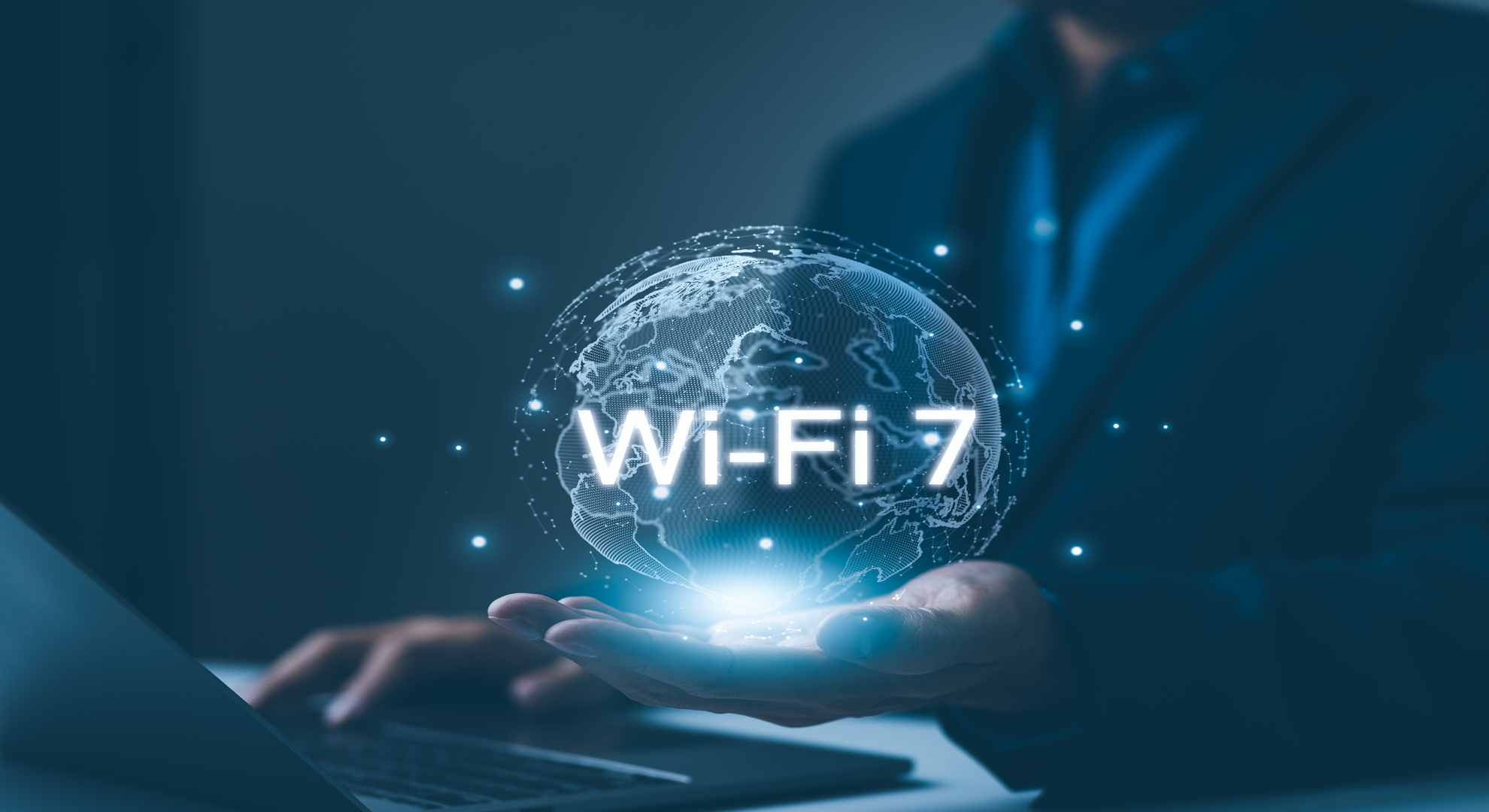
24 Jan What is Wi-Fi 7? Discover its impact on high-speed connectivity
For better or worse, technology evolves incessantly and at high speed, often making it difficult to keep track of cutting-edge innovations and trends. This is particularly true in the world of connectivity: while some users are still exploring the benefits of Wi-Fi 6 and Wi-Fi 6E, it’s time to look ahead at the next paradigm shift—Wi-Fi 7. Promising ultra-fast speeds, even lower latency, and significant improvements in user experience, Wi-Fi 7 is poised to redefine connectivity.
What is Wi-Fi 7?
This advanced connectivity technology, also known as the 802.11be standard, is defined by its use of transmission channels up to 320 MHz wide. This is twice the maximum bandwidth offered by its immediate predecessor, Wi-Fi 6E, which operates at around 160 MHz. This wider bandwidth enables the simultaneous transmission of larger volumes of data, resulting in much faster speeds. Wi-Fi 7 operates on three primary frequency bands:
- 2.4 GHz: Ideal for low-demand devices.
- 5 GHz: Offers a balance between speed and range.
- 6 GHz: Provides ultra-fast speeds with minimal interference.
Additionally, Wi-Fi 7 leverages Multi-Link Operation (MLO) to combine multiple channels across different bands, optimizing performance and reducing congestion.
How Wi-Fi 7 connectivity differs from previous technologies
In addition to MLO, Wi-Fi 7 incorporates several notable advancements compared to its predecessors. While none of these features represent a complete paradigm shift, they significantly enhance the user experience in several ways:
- Faster speeds: Wi-Fi 7 can reach speeds of up to 46 Gbps—a substantial improvement over Wi-Fi 6’s 9.6 Gbps. In typical home or commercial settings, this equates to nearly instantaneous data transmission and reception.
- Ultra-low latency: Perfect for high-demand applications such as gaming, augmented reality, and real-time streaming. As consumption trends increasingly prioritize ultra-high-definition visuals (like 8K video), booming gaming industries, and video-centric social media, Wi-Fi 7 becomes a crucial ally.
- 320 MHz compatibility: Wi-Fi 7 supports wider channels, maximizing efficiency—essential for balancing productivity and costs, particularly in corporate environments.
- QAM 4096: This new modulation technology enables more data to be transmitted per second, further enhancing the speeds facilitated by Wi-Fi 7’s wider channels.
What you need to benefit from Wi-Fi 7
With all the advantages discussed in this article, you might wonder: What do I need to enjoy ultra-fast connectivity with Wi-Fi 7? First, you’ll need a Wi-Fi 7-compatible router, as these are required to broadcast the signal. Although they are still in the early stages of commercialization, brands like TP-Link and Asus have already announced their first models.
Second, your devices must be compatible. Whether it’s a smartphone, computer, tablet, or any other internet-capable device, it must support the 802.11be standard. Additionally, your internet provider must offer high-speed connectivity plans that match the router’s capabilities to fully utilize Wi-Fi 7’s potential.

